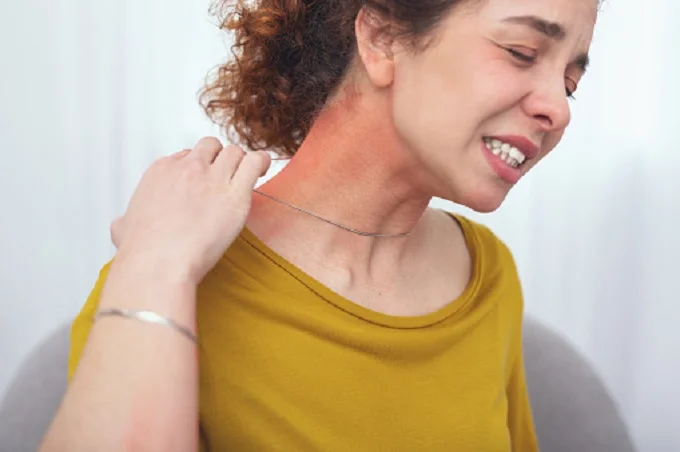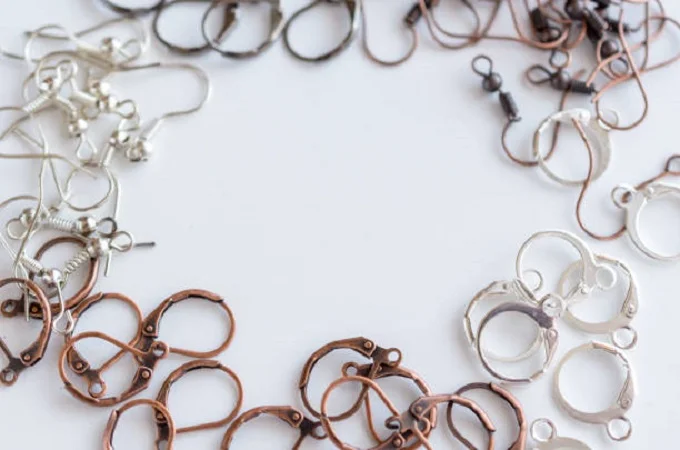Metal allergy: symptoms, causes and treatment

Metal allergy manifests itself when it comes into touch with it. It is a common disease that affects 10 – 15 percent of the population. And allergies aren’t limited to jewellery: they may also be to items we’re familiar with.
What are the symptoms of a metal allergy?

This allergy is no different from any other. When skin cells come into touch with an allergen metal, the molecules are trapped, which our bodies interpret as a hazardous material and prompt an immune reaction.
According to the US National Institutes of Health, allergy symptoms from metal exposure generally occur 24 to 48 hours after exposure. Itching, redness, pain, swelling of the skin, and fever in the exposed region are all possible symptoms. Dry patches and blisters may emerge in more severe instances. To get the latest stories, install our app here
Metal hypersensitivity may appear as more chronic disorders like fibromyalgia, which causes muscular, ligament, and tendon pain, and chronic fatigue syndrome, in addition to local skin responses.
What metals most often cause allergies
According to Cleveland Clinic dermatologist John Anthony, any metal may cause an allergic reaction. However, nickel, cobalt, and chromium are the most often metals that cause allergies. They are often used in alloys with other metals, like in jewellery production. They may also be found in white gold and gold plate compositions.
Copper, yellow gold, platinum, stainless steel, and 925 sterling silver are among the metals that are less likely to cause allergies.
Where can you find metal allergies, except for jewellery

Metal allergies reveal themselves not just while wearing jewellery. There are a few common allergies to which we pay little attention:
1. Mobile phones
A skin rash on your face, jaw, ears, or hands might be the result of excessive mobile phone usage. Because chromium and nickel are present in practically every occurrence of this approach, this is the case. It is advised that you use a phone with a headset, Bluetooth, or hands-free mode to minimize direct contact with these allergens.
2. Inks and needles for tattoos
If you are allergic to metals, you should see a tattoo artist before applying a drawing to your body. Many tattoo inks include a lot of chromium, cobalt, and nickel. This is also true of the needles used in tattoo machines. If you’re not sure whether or not you’re allergic to metals, a doctor’s test is recommended before proceeding with tattoos. To get the latest stories, install our app here
3. Cloth
If you are sensitive to metals, buttons, and accessories such as zippers might cause itching and redness. However, this does not imply that you should abandon them. Many persons with metal allergies build a barrier between their clothes and their skin, preventing allergen contact. A colorless varnish may be applied on small metal elements of clothes that touch the skin. Every week, it must be maintained.
4. Glasses
Nickel and cobalt may be present in spectacle frames. As a result, those who are allergic to metals may have a rash or redness on their skin while wearing glasses. In this situation, stainless steel and plastic frames are preferable, or contact lenses should be used.
5. Implants and artificial joints
Many surgical instruments, such as plates, joints, pins, and rods, are composed of titanium, a kind of metal. Dental implants and crowns often include metals. To discover whether this option is best for you, speak to your doctor about the instruments he wants to use and get tested for allergies before your treatment.
Metal allergy treatment
Treatment of hypersensitivity to metals is strictly individual, as allergens and reactions can vary greatly from person to person. To get the latest stories, install our app here
Avoiding the thing that triggers the response is typically enough to alleviate the issue of skin hypersensitivity. Your doctor may also prescribe corticosteroid creams and ointments to relieve local inflammation if your dermatitis is more severe. Antihistamine medications may also be prescribed by the doctor to help with the allergic response.
Because implants often induce systemic responses, they are more difficult to eliminate. Implant removal is occasionally considered when a non-metallic substitute is available and may be employed. A plastic dental filling, for example, may be used to replace a metal filling.

However, because of its complexity, replacing an artificial knee or hip with a non-metallic variety is rarely done if the allergy is caused by one. In these cases, treatment consists typically of both topical anti-allergic medicines and tablets or syrups that minimize the allergic response.




